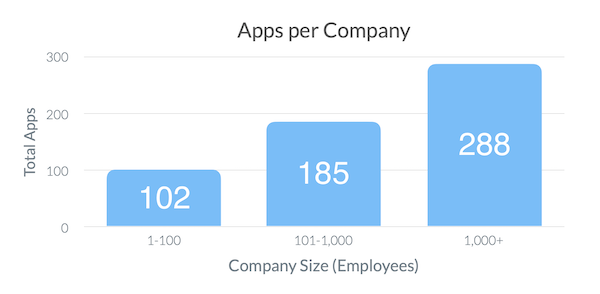Five reasons why services teams need an integration solution

Tray.io
Struggling to meet demand for customer integrations? See how savvy services teams are delivering integrations faster, reducing churn, boosting MRR, and more.
Now, more than ever, customer integration availability is a key differentiator in B2B SaaS. The average business uses over 170 different applications across its tech stack, meaning that virtually all of your customers stand to benefit from pre-built integrations.
Still, many product teams lack the resources to reliably launch new customer integrations while maintaining an ambitious product roadmap full of other mission-critical features. As a result, the same teams who would be focused on building and maintaining a best-in-class product get pulled sideways.
In other words, services, implementations, and integrations teams often assume the responsibility of deploying integrations to fulfill customer requests...rather than making sure they’re building a world-class product. As a result, companies deliver an experience that is disjointed, delayed, and ultimately disappointing, since services teams don’t know how much support they can expect from product.
As a services leader, you might’ve already experienced the ravenous demand for new integrations from your customers and partners firsthand. But did you know that new integration solutions can empower you to deliver rapid integrations that reduce churn, drive retention, and boost recurring revenue, all without burdening your product team? Here are five reasons why you should consider investing in an integration platform that makes your products stickier and your customers happier.

The average number of SaaS applications in the modern business. Source: ChiefMartec
1. Customer integrations can reduce churn
Companies that have an integration offering retain customers at a higher rate.
An innovative B2B SaaS vendor and Tray.io customer completed a churn analysis and found that customers with at least two active integrations had a 14% higher retention rate. Remarkably, the firm’s retention rate rose 36% among customers that had five or more active integrations.
2. Hand-coding integrations is resource-intensive and not scalable
The ROI of hand-coded integrations drops dramatically when you must rely on your team to manage them all on their own.
Hand-coding integrations is a slow, resource-intensive process that can take large engineering squads months to launch. You’ll also need services talent with the technical expertise to build integrations from scratch. Team members with such rare talents are hard to find and expensive to hire.
When leading ticketing platform Eventbrite struggled to maintain high-quality customer integrations at scale, they turned to Tray.io's embedded platform to accelerate integration delivery. After implementing Tray Embedded, they saved 80% of developer time and saw a 100x reduction in support tickets.
3. Integrations are challenging to maintain, scale, and secure over time
The most expensive part of an integration is long-term maintenance and management. Implementation is often the easy part. However, it’s common among organizations that are new to customer integrations to ignore the long-term strain on resources of keeping up-to-date with third-party API updates, bug fixes, feature requests, infrastructure management, compliance, and security audits.
When security platform HackerOne was spending 2 - 3 months building a single integration, they looked to Tray Embedded to supercharge their integration delivery. After implementation, they're able to deliver integrations 4x faster.
4. You don’t want to be over-reliant on other teams to meet customer needs
Even when the economy is booming, smart companies understand that retention can be an avenue for growth. Research suggests that simply renewing existing customers can be 7x more economical than acquiring new ones. In challenging economies, services teams feel the pressure to prevent customer churn wherever possible.
Now is the perfect time to take the reins on integration. You have the mandate from leadership to find creative solutions. You can also take the pressure off of your engineers, so they can focus on making core product enhancements. In the long run, you will have greater autonomy to solve your customers' problems without relying on developers.

Renewing existing customers can be 7x more economical than acquiring new ones. Source: forEntrepreneurs
5. Integrations increase upsell opportunities
Not only is there a correlation between integrations and higher retention rates, but integrations also have a positive relationship with recurring revenue. When a leading B2B company looked at the same cohort of customers, the company found that customers with two or more integrations had a 13.5% higher monthly revenue rate (MRR) on average. The average MRR jumped 35% among customers with five or more active integrations.
Takeaways
We live in an economic climate where churn can be catastrophic for companies. Business leaders need to invest in solutions that keep retention rates healthy. And chances are, your integrations play a significant role in your customers’ satisfaction. As a services team, you can rise to the occasion by investing in an integration solution that will have a lasting impact on your businesses’ revenue and efficiency.
Tray Integration Manager is designed to help services experts build, manage, and maintain third-party integrations for their customers at scale. Our highly intuitive low-code visual workflow builder enables technical minded-professionals to build complex integrations like a seasoned integration developer. Tray Integration Manager comes with pre-built connectors to all the popular B2B SaaS apps your customers need and logic-based helpers designed to abstract away much of the traditional burden of building integrations.
Services teams are using Tray Integration Manager today to deploy powerful integrations directly to their customers as pre-packaged solutions. Want to learn more? Sign up for a 1:1 demo to see how you can deliver customer integrations faster, incredibly efficiently, and at any scale.